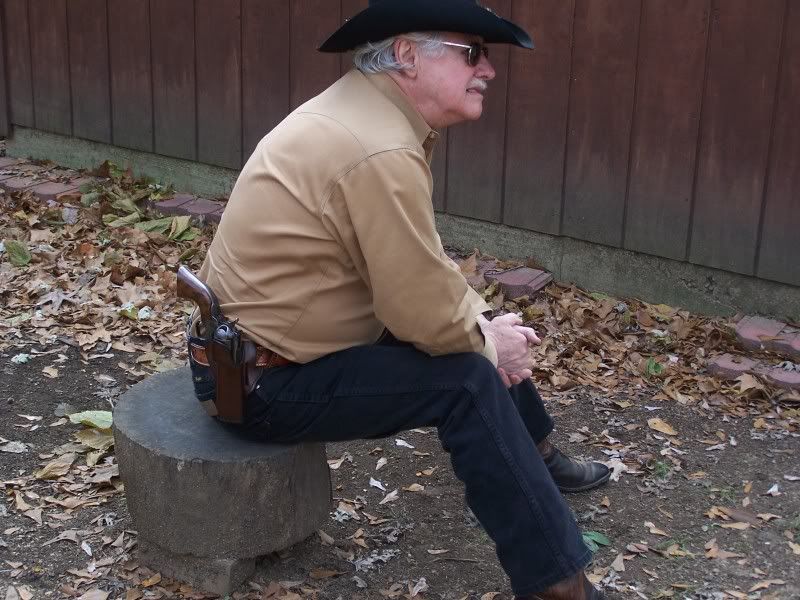Bob Wright
New member
I sure don't want to make anybody mad, but I performed this experiment just to satisfy my on mind on the subject of carrying six rounds in a single action revolver.
I loaded six rounds of empty cases into my Ruger Blackhawk (Three Screw) .44 Special and my Uberti Flat Top Target in .45 Colt. My cases were once fired Mag-Tech .44 Special, and Starline .45 Colt.
I loaded the revolvers then lowered the hammer so the firing pin was indexed between cartridge rims. My first objection to this becomes apparent, the cylinder locking bolt is pressed, under spring pressure, against the side of the cylinder. This itself sort of set my teeth on edge.
Using my thumb and fingers, I applied pressure trying to rotate the cylinder. Using considerable force, I was unable to rotate the Ruger's cylinder. I was satisfied that this could be considered a safe carry.
The Uberti was a different story, however. Only slight pressure was applied and the cylinder clicked into battery position, resting over what would have been a live primer. Definitely unsafe with this revolver.
The difference becomes clear when the guns actions are considered. The Ruger has a coil mainspring, the Uberti a flat mainspring. The coil mainspring exerts even pressure when the hammer is at rest. The flat mainspring is "relaxed" and places little tension on the hammer at rest, so that the rotation attempt lets the cartridge rim push against the firing pin and cam the hammer back slightly, enough to complete rotation.
As was displayed previously, a Colt with additional slots in the cylinder would probably lock the cylinder in place.
Mainspring tensions may vary, this was only two revolvers and one batch of cartridge cases.
My conclusion: I'll continue with the empty chamber under the hammer.
Bob Wright
I loaded six rounds of empty cases into my Ruger Blackhawk (Three Screw) .44 Special and my Uberti Flat Top Target in .45 Colt. My cases were once fired Mag-Tech .44 Special, and Starline .45 Colt.
I loaded the revolvers then lowered the hammer so the firing pin was indexed between cartridge rims. My first objection to this becomes apparent, the cylinder locking bolt is pressed, under spring pressure, against the side of the cylinder. This itself sort of set my teeth on edge.
Using my thumb and fingers, I applied pressure trying to rotate the cylinder. Using considerable force, I was unable to rotate the Ruger's cylinder. I was satisfied that this could be considered a safe carry.
The Uberti was a different story, however. Only slight pressure was applied and the cylinder clicked into battery position, resting over what would have been a live primer. Definitely unsafe with this revolver.
The difference becomes clear when the guns actions are considered. The Ruger has a coil mainspring, the Uberti a flat mainspring. The coil mainspring exerts even pressure when the hammer is at rest. The flat mainspring is "relaxed" and places little tension on the hammer at rest, so that the rotation attempt lets the cartridge rim push against the firing pin and cam the hammer back slightly, enough to complete rotation.
As was displayed previously, a Colt with additional slots in the cylinder would probably lock the cylinder in place.
Mainspring tensions may vary, this was only two revolvers and one batch of cartridge cases.
My conclusion: I'll continue with the empty chamber under the hammer.
Bob Wright

